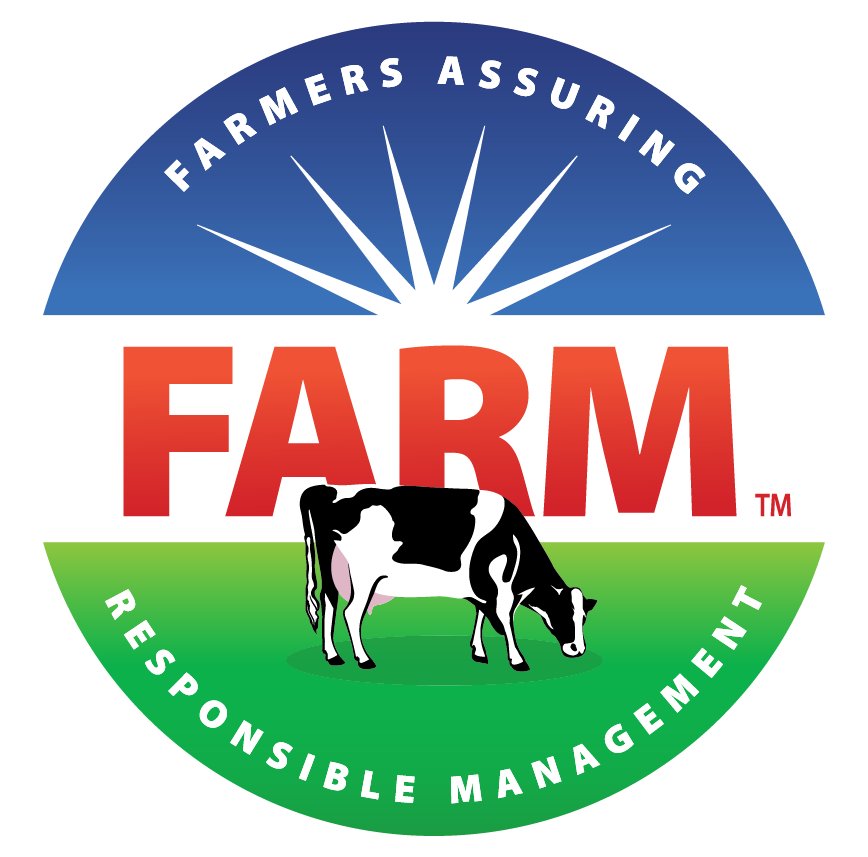FARM Environmental Stewardship Version 3
The FARM Environmental Stewardship Program regularly reviews and incorporates new science to (1) ensure robust and reliable results and (2) meet expanding interests and needs of farmers and FARM Program participants. Programmatic updates and accountability measures are governed by the FARM Environmental Stewardship Task Force, the National Milk Producers Federation (NMPF) Environmental Issues Committee, and the NMPF Board of Directors with input from industry stakeholder groups including farmers, researchers, academics, FARM Program participants and more. The Innovation Center for U.S. Dairy’s environmental research team leads scientific research to keep the model current with the latest scientific advancements. They regularly collaborate with researchers from leading academic and research institutions, both domestically and internationally. The FARM Program is currently in the process of facilitating the development of FARM Environmental Stewardship Program Version 3, focusing on a scientific update to the greenhouse gas model that powers the tool in collaboration with the Innovation Center for U.S. Dairy.
High-Level Description and Timeline
NMPF and the Innovation Center for U.S. Dairy are collaborating to update the greenhouse gas (GHG) model that powers the FARM Environmental Stewardship Program. When FARM Environmental Stewardship Program Version 3 launches in July 2024, FARM Environmental Stewardship Program will transition to a “process-based” model through work with Ruminant Farm Systems (RuFaS) – an initiative involving researchers from across the country focused on environmental modeling of dairy farms.
Shifting to a process-based model offers several benefits for addressing customer requests while offering more insights to farmers and FARM Program participants:
- A more robust and accurate model while remaining practical and easy to use
- Farm-level environmental insights through scenario analyses to support informed decision-making about the adoption of practices and technology
- Increased functions to enable farmers, cooperatives and processors to work with supply chain customers interested in investing in on-farm interventions and GHG reductions.
Events
Software development and piloting
Once the scientific modeling and research are near complete, work can begin on updating FARM’s software system to accommodate the Version 3 updates. FARM’s IT provider, Vyla, will work closely with the RuFaS development team. Stakeholder inputs will be used to inform desired user interface functions.
Training and resource development
As the model is being integrated into the FARM Environmental Stewardship Version 3 evaluation tool, FARM will work to develop the supportive evaluator training and program resources. The evaluator training will be available for users of the tool in Q3 2024 and offered throughout the version cycle. Many FARM Environmental Stewardship resources will be updated with the new version, including the Prep Guide and User Guide.
Farmer and evaluator feedback
After its introductory launch in July 2024, FARM will collect farmer and evaluator feedback through forms and virtual meetings to collect additional information on formatting of the tool and results. FARM will seek to share this feedback with the FARM Environmental Stewardship Task Force and appropriate governance channels before considering adjustments in 2025.
Implement model updates
FARM will review feedback received in 2024 as well as any RuFaS model enhancements. Through this process, FARM will work closely with the Innovation Center’s environmental research team and the RuFaS team to identify updates FARM can incorporate into the Environmental Stewardship tool.
Working Group Meetings
The FARM Environmental Stewardship Program Version 3 Working Group is composed of farmers, evaluators and co-op/processor staff to provide key stakeholder feedback and a sounding board for the research team. The Working Group has met regularly since Q2 of 2022. The Working Group meetings have been an opportunity for these stakeholders to provide input on topics such as:
- Recruitment of farmers for additional model validation
- Management options for scenario analyses
- Data inputs to use in the basic version of the FARM Environmental Stewardship Program versus those to fill in with default values
- Desired software functionality
Additional stakeholder input will be solicited through feedback webinars to be held in 2024.
Working Group Members
Antone Mickelson
Northwest Dairy Association
Ashley Warren
First District Association
Austin Allred
Royal Family Farming
Brandon Clark
United Dairymen of Arizona
Brian McGarry
McGarry Dairy
Casey Storey
Tillamook County Creamery Association
Darrin Soares
Hilmar Cheese Company
Deborah Gingrich
Michigan Milk Producers Association
Dixie Martinho
California Dairies, Inc.
Ed Oppedyk Jr
Edward Oppedyk Dairy, LLP
James Weber
Weber Family Dairy
Janae Klingler
Maryland & Virginia Milk Producers
Jed Davis
Agri-Mark, Inc.
Jen Millican
Stotz Dairy
Jim Biddle
Mill Hill Farms
Kayla Rink
Dairy Farmers of America, Inc.
Kristy Miron
Land O’Lakes, Inc.
Mike Machado
Glanbia Foods, Inc.
Rachel Turgasen
Foremost Farms USA
Sandy Larson
Larson Acres
Travis Fogler
Stonyvale Farm
Communications
Wide stakeholder engagement and awareness are key to the successful development of FARM Environmental Stewardship Program Version 3. In addition to the materials linked below, the FARM Program has delivered presentations about Version 3 to the following groups: the NMPF Board of Directors, the NMPF Environmental Issues Committee, the Innovation Center Environmental Stewardship Committee, the Innovation Center Stewardship Commitment Committee, the FARM Farmer Advisory Council and the FARM Environmental Stewardship Task Force.
